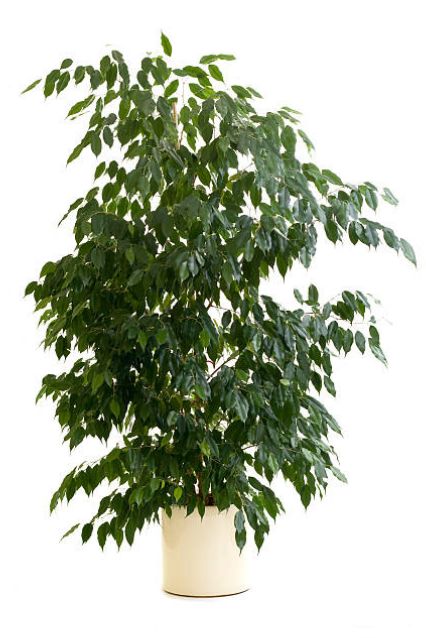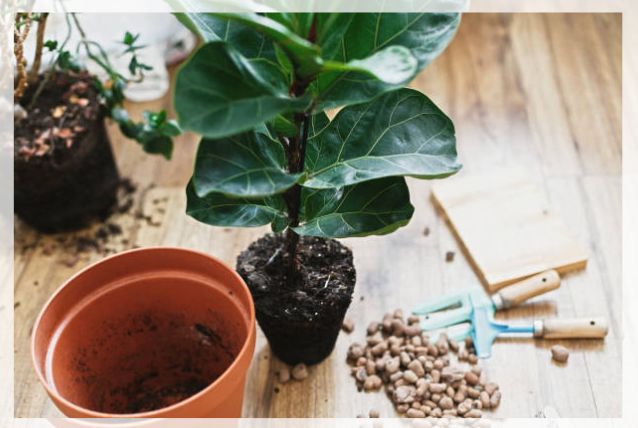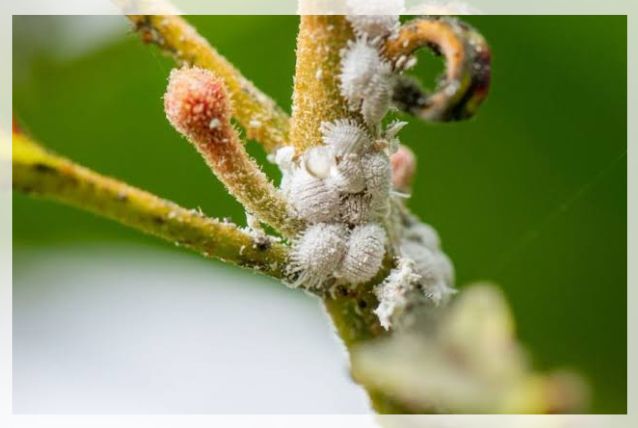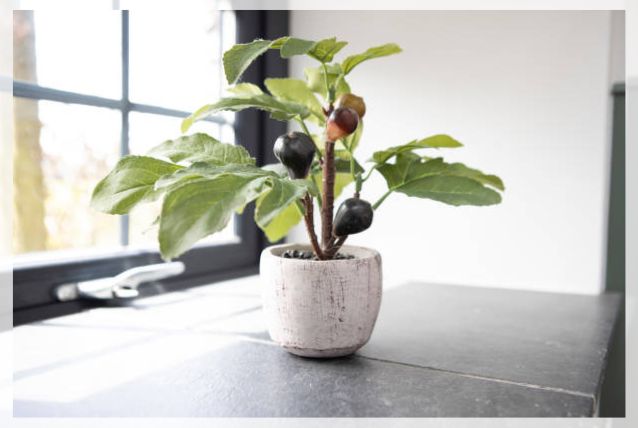If you love having plants in your home and office, you can choose to have a ficus plant.
These plants are very common in both homes and offices as they look like a typical tree with a single trunk and a spreading canopy.
Though they are popular plants, ficus plants are finicky.
However, if you understand how to care for them, you will be better equipped with keeping them healthy and happy for years to come.
It is most commonly known as a weeping fit.
Moreover, it is a member of the ficus genus of plants that also includes rubber trees and fig fruit trees.
However, when you have them in your home, most people refer to a weeping fig Ficus benjamina as ficus alone.
Keep on reading to learn more about the ficus plant.
Ficus Plant
You may think that a ficus plant is just like a basic plant with narrow and droopy glossy leaves.
However, this plant is a tropical specimen that has very specific requirements.
Though it is finicky, few plants are quite as flexible as this plant.
In fact, F. benjamina is one of the favorite plants among bonsai growers as you can either braid or shape it.

Moreover, a ficus tree in your home or landscape will grow into a small shrub or tree.
It is important to note that you can plant a ficus plant in spring and focus the root ball directly into the ground.
It is a fast-growing tree, and new growth often appears in a few weeks.
However, it is important to note that the sap of the ficus tree is toxic to both humans and pets.
Learn more about Poisonous Plants for Pets here.
Quick Facts about Ficus Plant
Some quick facts about the ficus plant are:
| Common Name | Ficus tree, ficus, weeping ficus, fig tree, and weeping fig |
| Botanical Name | Ficus benjamina |
| Family | Moraceae |
| Plant Type | Perennial |
| Mature Size | Indoors 6 ft. high, 3 ft. wide, outdoors up to 70 ft. tall, 70 ft. wide |
| Sun Exposure | Filtered bright sun |
| Soil Type | Indoors rich and fast-draining, outdoors loamy and well-draining |
| Soil pH | 6.5 to 7 |
| Bloom Time | Indoor plants do not bloom, outdoor plants bloom during spring |
| Flower Color | Small yellow or white blossoms |
| Hardiness Zones | 5 to 8 indoors; 9 to 11 outdoors |
| Native Area | India and Southeast Asia |
| Toxicity | Toxic to humans and pets |
Learn more about Pet-Friendly Gardens! here.
Ficus Plant Care
In native habitats, you can often see the ficus plant as a landscape tree with hanging and buttressed roots and a huge crown.
While at home, this plant is a stunning specimen plant that can provide a number of years of lush foliage.
Moreover, this plant is quite finicky, so you will need to prepare for some specific care requirements.
A lot of people tend to experience frustration at the hands of ficus plants.
There a prone to leaf drop in drafty, cold conditions, and do not like to be moved.
As tropical plants, they will need enough light, warmth, and humidity to look their best.
Light and Soil Requirments
Whether indoors or outdoors, ficus plants will need bright light, but only acclimated plants can thrive in direct sun.
They will appreciate it when you move them outside in summer.
But it is important that you do not place them in direct sunlight.
Moreover, bright, direct light will scald the leaves and cause leaf loss.
This plant will need well-draining and fertile soil.
If your soil is based on potting mixes, it will work well for this plant and provides the nutrients it needs.
Make sure that you avoid planting them in soils you use for roses or azaleas, as these are more acidic potting soils.
Water, temperature, and other Requirments
One of the important things to remember about the ficus plant is that overwatering can be a problem for them.
Water your indoor tree only when the first two inches of the soil feels very dry.
Find where the soil is dry by sticking your index finger halfway into the water.
Moreover, water them throughout the summer by giving them water until it begins to run out of drain holes at the bottom.
Make sure to remove the excess water so that your tree is not sitting in moisture.
Reduce the amount of watering in winter, while dry homes provide enough moisture by misting your plant.
When you have a ficus plant as an outdoor plant, water deeply once or twice a week with 1.5 inches to 2 inches of water.

However, water only when the top 2 inches of soil feel dry.
Your ficus plant is unable to tolerate low temperatures or drafts.
Thus maintain a temperature above 60 degrees Fahrenheit at all times both indoors and outdoors.
However, they tend to thrive better when the temperature is above 70 degrees Fahrenheit.
Any cold drafts from windows, doors or air-conditioner units will harm your plant.
Your plant likes a relatively humid environment.
Therefore, you can regularly mist the leaves or provide a pebble tray filled with water below the plant.
You will need to feed your plant with slow-release pallets at the start of the growing season.
These plants are rapid growers and will benefit from monthly fertilizations in the spring and summer, while, once every two months in the fall and winter.
Types of Ficus Plant
Historically, the popular Bodhi tree under which Buddha achieved enlightenment was a Ficus religiosa, which is famous for its leaves.
These leaves have distinctive and extended drip tips.
Some other types of ficus plants are:
Creeping Fig, Ficus Pumila: These are climbing plants that are easy to care for and maintain.
Small leaves and wiry-like stems tend to creep anywhere you allow them to.
Moreover, these are different from the typical ficus tree and you will need to do some pruning and provide a suitable pot or a moss stick for their growth.
Fiddle Leaf Fig, Ficus Lyrata: This is one of the plants with the largest leaves in this genus.
It is important to note that these species are sensitive to low light and cold temperatures, so you will need to be cautious when growing them indoors.
It can grow to 3 meters tall which makes it a stunning ornamental plant.
Rubber Plant, Ficus Elastics: This one is another popular tree from this genus.
The most famous one is the decora which has large oval-shaped leaves and the robusta which has larger leaves.
However, it is not as sensitive as the fiddle fig tree and can tolerate low light conditions.
Make sure that you do not overwater your plant.
Starlight, Ficus Benjamins: This variegated version has white splotches on its leaves.
Pruning and Propagating Tips and Techniques
You will need to prune your indoor ficus tree to maintain its shape and prevent it from touching the ceiling.
Moreover, you should prune your plant in winter when it is not actively growing.
Make sure to wear gloves and use a sterilized, sharp pair of pruning scissors.
Cut back to just before the node so new growth can sprout.
However, if your plant is overgrowing or becoming leggy, do not be afraid to trim it back.
New leaves tend to sprout quickly.
If you do not live in the tropics, you may find it difficult to find the ficus tree.
Seeds can be tough to germinate, while you can propagate ficus plants with air layering.
However, it is not always the best reliable method.
The best way is to propagate your plant with stem cuttings. Follow the steps below:
- with the help of sterilized pair of sheers, you will need to cut back a stem from the plant at least 6 inches tall
- make sure that the cutting has a woody base and green growth at the tip
- dip the bottom of the cutting in the rooting hormone
- root the cutting in an 8-inch pot with a drainage hole and fill it with well-draining potting soil
- cover the cutting with a clear plastic bag to keep the soil moist
- cut a tiny slit or two at the top of the bag so that your plant can breathe
- roots will be strong in about 90 to 120 days at which you can remove the plastic covering
- then transplant your plant outdoors or into a pot in the spring.
Potting and Repotting Ficus Plant
When your ficus plant is healthy, it will outgrow both its pot and your house.
You will need to repo every other year to slow its growth and keep the plant to a manageable size.
Make sure to check the roots if they are coming out of the drainage hole, and if so, repot them.

Repotting is best done in the springtime when your plant is growing.
When doing so, always use a pot of any material that is about 2 to 3 inches larger than the previous one and has plenty of drainage holes.
Moreover, use high-quality potting soil for your repotted ficus.
Common Pests, Plant Diseases, and Problems
It is important to note that indoor and outdoor ficus plant is vulnerable to:
- mites
- scale
- mealybugs
- whiteflies
- aphids
You can fight pests with the help of insecticides like neem oil.

In some cases, your plant can contract a leaf spot disease. In such cases, you will need to discard the infected leaves on and around the plant for further spread of the fungus.
Moreover, a common problem with the ficus plant is that it tends to respond to stress by losing its leaves.
However, the leaves can curl and turn yellow due to stressors.
Both indoor and outdoor stress can be due to a number of things like drafts, pests, underwatering, overwatering, too little light, low humidity, and change in temperature.






Leave a Reply